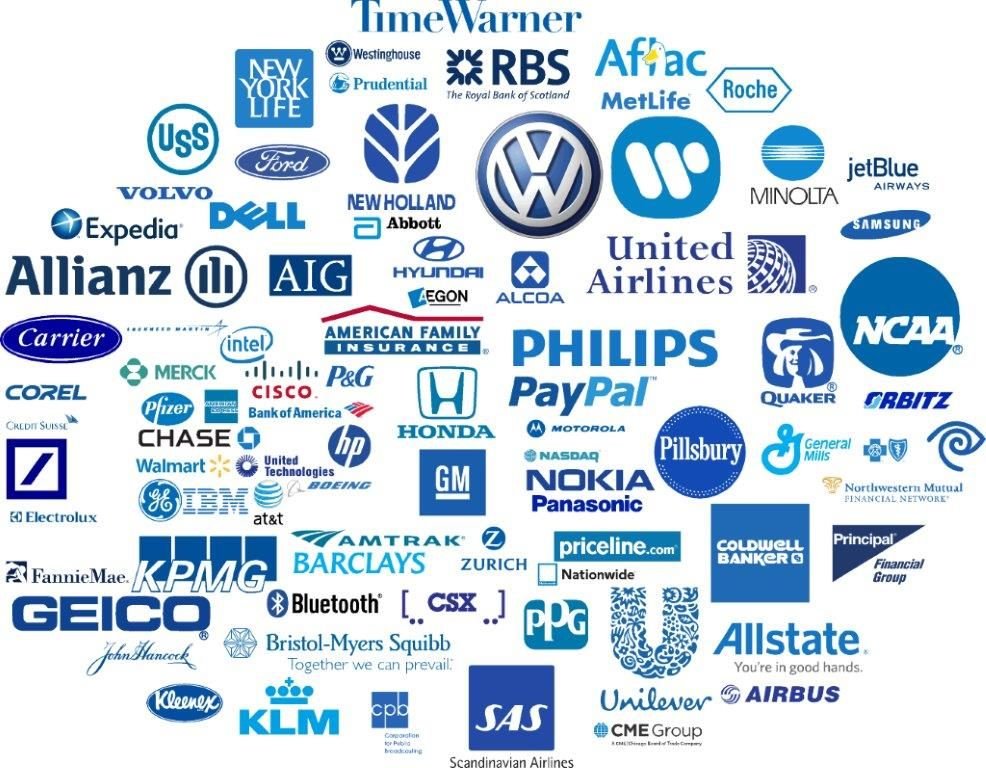There’s plenty of research that shows how blue is the world’s favorite color. Studies going back to 1941 indicate that universally, bluish hues are the most preferred. Even Republicans generally prefer blue. But why? And does that mean blue is the right color for your startup branding palette?
A seven year study conducted by psychologists Stephen E. Palmer and Karen Schloss, published in 2010, reveals that a person’s preference for a given color can be determined by averaging out how much that person likes all of the objects they associate with that color. For example, how much you like the color orange depends on how you feel about pumpkins, traffic cones and Cheetos, among other things. For green, it depends on how you feel about Brussels sprouts, dollar bills and the lawn.
“If you look at all of the things that are associated with blue, they're mostly positive,” explains Schloss, an assistant professor of psychology at University of Wisconsin-Madison. (Which is also where this writer went to college and met his future wife. Just sayin’.) “It’s really hard to think of negative blue things.”
So should the fact that people overwhelmingly like the color blue be the reason your company chooses a blue color palette? The short answer is, hell no. Millions of people who like the color blue do not drive Fords, use IBM or purchase Viagra from Pfizer. (All massive blue brands.) The first rule of marketing and advertising is not: “Do what everyone else is doing.” The first rule is “Do what you can to stand out, not blend in.”
People also see blue as a responsible, corporate color. It connotes trust. It’s a color to be taken seriously because so many Fortune 500 companies use blue as a primary color. So isn’t a predominantly blue brand inherently responsible and able to be taken seriously? Again, hell no. Too many other factors influence the way potential customers see a brand. And the first one is, do they even notice the brand? And if you’re one of thousands of tech startups using a sans serif typeface over a blue, grey and black palette, fewer people are gonna even notice you, let alone pass judgment.
DIG INTO THE BRAND GUIDELINES
We often have clients that say their main color is blue, yet when we look into their branding documents we find these incredible arrays of secondary colors. So we build campaigns off the secondary colors because for Series B startups just beginning to advertise, people don’t know the brand, nor the brand color, nor anything else for that matter. So this is the time to use colors and design that helps your ad campaign yes stand out.
Besides the secondary color palette, there’s often graphics or blog design guidelines that can inspire what the main brand can become. Often these guidelines were put together early and without much purpose and there’s no harm in adapting things as you launch an initial campaign.
One of the hundreds of OOH boards we created for the tech startup Stytch.
When we dug into the Stytch brand guidelines, we found the stitched color lines on the very last page. This became the basis for our design and campaign, even though Stytch is a pretty blue company. They knew the brand could stretch beyond a single color and that potential customers had no brand experience anyway.
When we worked with PagerDuty, Collins had developed an amazing non-blue brand design that still evoked trust and security, two core tenets of the PagerDuty brand. So when we created the digital and outdoor campaign and re-designed the website, there was no way anyone was gonna use the most basic color on the planet.
Blue stands for trust, but what color is the red Cross logo?
A sea of blue branding.
Just look at a quick Google search of blue brands in the universe. You’re not gonna own the color blue. No one is gonna think of your startup when they see blue. Yes, blue stands for trust. But the Red Cross is red, so?
########
The Small Agency Blog is produced by Division of Labor; a top San Francisco ad agency and digital marketing firm that’s been named Small Agency of the Year twice by Ad Age. The award-winning creative shop services clients on a retainer or project basis. They also offer brand consulting services and hourly engagements for startups and smaller brands. Click here for a free consultation.




